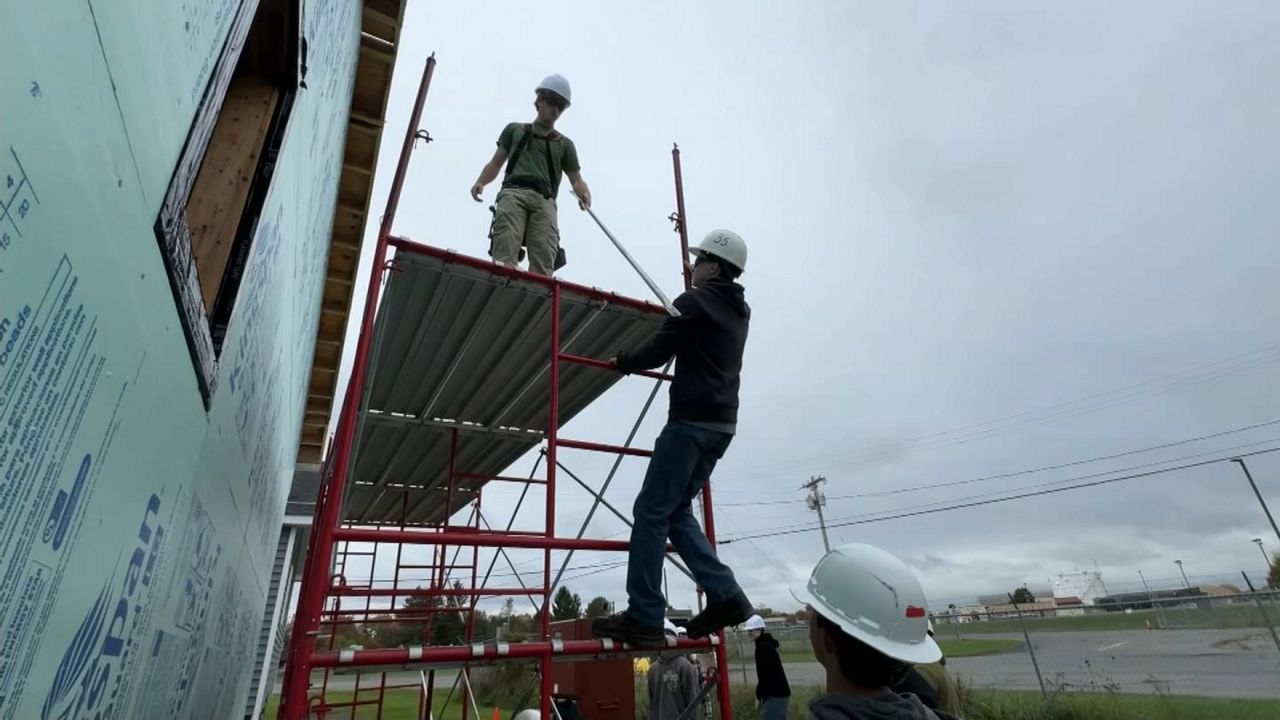New York education is changing. By August 2027, NYSED hopes to offer multiple pathways to graduation that do not require Regents testing.
Career training is one of those pathways.
Recently, the Board of Regents had its first meeting in decades outside of Albany, touring OCM BOCES in Syracuse to see hands-on, skilled learning. They want to find ways to expand these opportunities for students.
At the Onondaga Cortland Madison BOCES Construction Technology class, the sound of hammers pounding and power tools buzzing has replaced the quiet of traditional classrooms. Here, students like seniors Logan Mills and Dylan Brownson are trading textbooks for tool belts — and they’re earning math and science credits while doing it.
“I chose this class because when I was a junior, I thought that I wanted a career in construction,” said Brownson, a senior from Chittenango High School. “We kind of do everything from the framework to the insulation, the electricity, all the finished work. You do a little bit of everything.”
For students who struggle with sitting in traditional classrooms all day, the hands-on approach is proving transformative. The program has seen 30% growth over five years, and students are learning geometry and trigonometry while framing walls and squaring foundations.
“I hate sitting in a classroom. I hate doing schoolwork all day, and I just do not like it,” Mills admitted. “But this really got us outside. And it’s just amazing because career and technical education is so important, because you got this huge skills gap, this huge trade gap. And people like everybody here [need] to fill that gap.”
The students have already built and auctioned off one complete house and are currently working on their second, gaining real-world construction experience that directly addresses an ongoing skilled labor shortage.
Teacher Nick Ross, a former general contractor, says the model works because it gives students what traditional education sometimes can’t: real-world application and purpose.
“This class really is a way for them to actually see how things like math and science relate to the real world,” Ross explained. “For these kids, they’re different style learners that come here. Each and every one of them will find importance in the projects that we work on each day.”
The program recently caught the attention of state education leaders as New York moves toward reforming graduation requirements. Last year, the New York State Department of Education announced plans to move away from requiring Regents exams for high school graduation, with discussions now underway to expand hands-on learning and career training opportunities for teens.
NYS Regents Chancellor Lester Young, Jr. toured the OCM BOCES facility and saw firsthand what’s possible when students are given different pathways to success.
“When we walk through the OCM BOCES here, we saw something that we don’t see in other places,” Young said. “I’m from New York City. There’s no place in New York City where young people have access to this. We need to think about how do we make this into policy decisions to ensure that what we witnessed today is available to more young people.”
As educators work to build new statewide pathways to graduation by 2028, programs like OCM BOCES could become the blueprint for reaching students who learn by doing.
Education leaders are exploring ways to fund access to these programs for 10th and possibly ninth graders as a strategy to prevent chronic absenteeism and high school dropouts. However, expanding these opportunities statewide will require additional funding.

